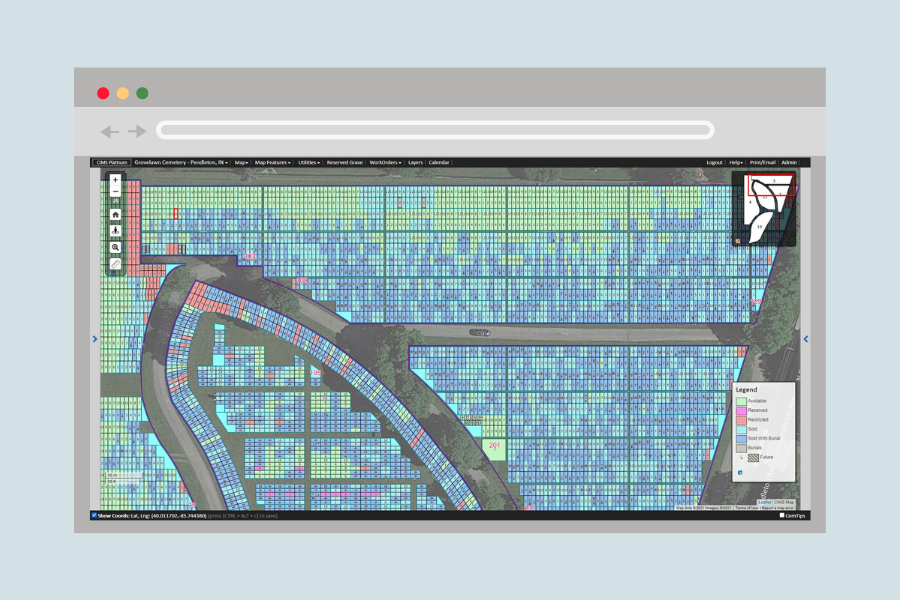Starting from Scratch: What to Do if Your Cemetery Records Are Lost, Destroyed, or Incomplete

Losing all your cemetery records can be a daunting and stressful situation. Whether due to a natural disaster, an accidental deletion, or a system failure, the loss of these records can disrupt operations and create significant challenges for cemetery management. However, starting from scratch is possible, and CIMS Cemetery Software is here to guide you through the process. Here’s what you can do to rebuild and safeguard your records for the future.
Step 1: Assess the Situation
First, assess the extent of the loss. Determine whether any records can be salvaged from partial backups, physical copies, or other sources. If some records are recoverable, gather and consolidate them into a single location to simplify the rebuilding process.

Step 2: Gather Information
If your records are completely lost, start gathering information from various sources:
- Staff and Community Knowledge: Engage with your staff and community members who might have knowledge or personal records of interments, plot ownership, and other relevant details.
- Physical Evidence: Walk through the cemetery to document existing headstones, markers, and plaques. Photograph and note inscriptions and locations.
- Local Archives and Government Records: Check local archives, government offices, and historical societies for any records or maps that might be available.

Step 3: Rebuild Your Records
CIMS Cemetery Software provides a robust platform to help you systematically rebuild your records. Here’s how:
- Recreate Your Cemetery Map
Your cemetery map is a key element in managing your cemetery records. This map defines the inventory of the cemetery, so you know what plots are sold and available. If you are missing your maps, the first step is to create a map that identifies every space in the cemetery, regardless of whether it is sold, or if there is a burial on it. It should show how the lots and graves are numbered, and hopefully follow the numbering and naming conventions that have been used in the past. The CIMS team can assist with this process and use drone imagery to help identify grave spaces. It may make more sense for you to hire a local land surveyor or Ramaker’s survey team to assist in the development of this map.

- Use the Map to Create a List of Every Space in The Cemetery
This list can be created in something like Microsoft Excel or Google Sheets, or it could be created via cemetery management software such as CIMS Light, Gold, or Platinum. If implementing cemetery software is out of reach for your organization at this point, here is an Excel template that you can download and use to rebuild your digital data.
- Data Entry and Verification
Enter the owner and burial information into the database or into the cemetery software. A common mistake many new cemeterians make is only tracking information on spaces that have burials. However, it is also critical to track which spaces are sold, even if they don’t have burials on them. It is very difficult to develop accurate ownership information for cemeteries which are lacking paper records. Enter as much as you can, and if it is your only option, enter burial information from headstones in the cemetery. Cross-reference and verify information to ensure accuracy.
Data entry will be the most laborious and time-consuming part of this project. It is critical that the person doing data entry is meticulous and enters the information correctly.
- Going Forward, Ensure that You Have a Backup
As you recreate your cemetery information, make sure it is being backed up. If you are using CIMS Cloud, cemetery records are backed up to Amazon Web Services (AWS) every night. That data is stored in multiple locations nationwide. This redundancy means that even in the event of regional outages or catastrophic events, your data will still be accessible. Our commitment to nightly backups and widespread data distribution ensures that you can have peace of mind, knowing that your cemetery's data is secure and always available when you need it most. But if you are using some other system, make sure you are backing up your data regularly, or that it is being saved to the cloud. In addition, check your backup system on a regular basis to make sure it’s working.
While losing all your cemetery records is a significant setback, it is often possible to rebuild from scratch with the right approach and tools. CIMS is here to support you every step of the way, ensuring that your cemetery is managed efficiently and effectively, no matter what challenges arise. Contact us today to learn more about how we can assist you in rebuilding and protecting your cemetery records.


